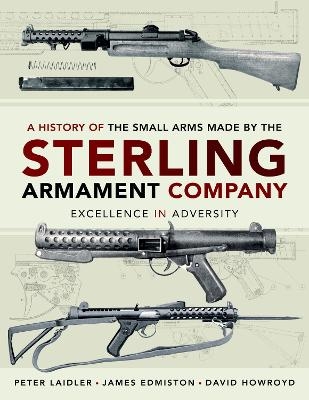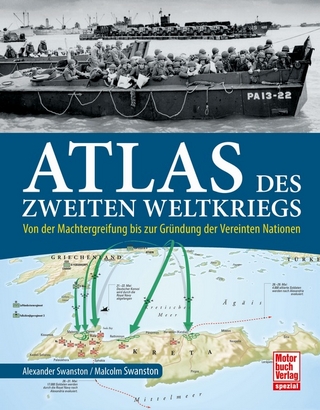
A History of the Small Arms made by the Sterling Armament Company
Pen & Sword Military (Verlag)
978-1-5267-7330-2 (ISBN)
An in-depth history of the small arms made by the Sterling Company of Dagenham, Essex, England, from 1940 until Sterling was purchase by British Aerospace in 1989 and closed.
The Lanchester and the Patchett Machine Carbines were both developed at Sterling Engineering Co Ltd during World War II.
With the appearance of the earliest Patchett prototypes the military began testing them in ever more rigorous trials, wherein the Patchett kept proving its merits. This led to limited UK adoption of the MkII Patchett as the L2A1 in 1953, and the first Sterling', the MkII, as the L2A2 in 1955.
Then came Sterling's Crown Jewel', the superb Mk4, adopted as the general-issue UK Gun, Sub-Machine, L2A3' in September, 1955/. Manufactured briefly but intensively by ROF Fazakerley (1955-1959) and by Sterling for over 30 years, nearly 4000,000 were made.
Unlike wraparound bolt designs like the UZI, the Sterling was capable of being truly silenced with standard 9mm ball ammunition (as opposed to being merely supressed). The excellent silenced Sterling-Patchett Mk5, adopted as the UK L34A1 in 1967, is the only Sterling remaining in British Service.
All prototypes, military Marks, commercial and licensed production models of the Sterling are described, including the Canadian C1 SMG and the Indian 1A Carbine. Contains notes on manufacturing methods and procedures as used at Sterling, ROF Fazakerley, Canadian Arsenals Limited and the Indian Small Arms Factory, Kanpur (Cawnpore), plus extensive notes on inter-model interchangeability, serial number ranges, quantities produced, client-country purchases of the various Sterling Marks, and accessories.
Peter Laidler, himself the son of a long-serving British Army Warrant Officer, attended the Armourers' Course at the Army Apprentices School, Carlisle between January, 1963 and December, 1965. Peter Laidler went to Malaya with the last British Forces to be based there. This was followed by service with the 1st, 4th and 8th Royal Australian Regiments plus the New Zealand Infantry in South-East Asia, Australia and New Zealand. Edinburgh-born James Edmiston, whose interests feature rugby and music, owned the Sterling Armament Company from 1972 until 1983, when steady sub-machine gun production was complimented by new product research and development and plant investment. His modest Oxford law degree assisted during constant harassment by a state apparently hell-bent in destroying any competition from private industry. He is intensely proud of the achievements of the Sterling team. David Howroyd joined the Sterling Group of Companies after completing his tool-making apprenticeship with the Plessey Company in 1944/. He was called up' for National Service with the post-war RAF between 1946 and 1948, where his skills were especially sought due to the release of thousands of skilled RAF veterans into post-war industry. He returned to the Sterling Engineering Company in late 1948/. After 1972 he became General Manager, and subsequently the Works Director of Sterling Armament Co Ltd.
| Erscheinungsdatum | 20.11.2020 |
|---|---|
| Zusatzinfo | 32 colour & 350 black and white illustrations |
| Verlagsort | South Yorkshire |
| Sprache | englisch |
| Maße | 215 x 276 mm |
| Themenwelt | Natur / Technik ► Fahrzeuge / Flugzeuge / Schiffe ► Militärfahrzeuge / -flugzeuge / -schiffe |
| Sozialwissenschaften ► Politik / Verwaltung | |
| ISBN-10 | 1-5267-7330-9 / 1526773309 |
| ISBN-13 | 978-1-5267-7330-2 / 9781526773302 |
| Zustand | Neuware |
| Haben Sie eine Frage zum Produkt? |
aus dem Bereich


